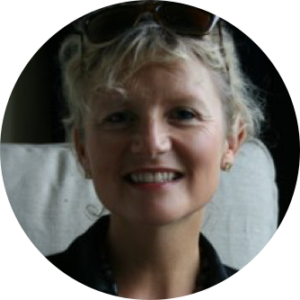 Interview with Nicola Bedlington, Secretary General at European Patients’ Forum (EPF).
Interview with Nicola Bedlington, Secretary General at European Patients’ Forum (EPF).
PFMD and PARADIGM are two parallel projects working in harmony to move the needle on patient engagement. Who better to compare and contrast the two initiatives than Nicola Bedlington, Secretary General of the European Patients Forum, co-leader of PARADIGM and a founding member of PFMD?
There is much complementarity between the two initiatives, but this should not be confused with duplication, explains Bedlington. “Essentially, PARADIGM is a 30-month project that’s focused primarily on Europe, while PFMD is global and is an ongoing platform,” she says.
The scope of PARADIGM as an individual project is very defined, she continues. “We are looking to participate in the co-creation of a sustainable framework; we’re homing in on three specific decision points in the lifecycle of medicines. PFMD is looking at the entire lifecycle and, with EPF, is also starting to look at the wider landscape beyond medicines development, where meaningful patient involvement is critical.”
PARADIGM is looking specifically at the whole area of prioritisation of research at the very beginning of the process, explains Bedlington; how do we identify the unmet needs of patients in research prioritisation? “We are also looking at the involvement of patients in the whole clinical trials environment. And the third piece is exploring the involvement of patients in early dialogue between industry, the HTA community and the regulators to look at the kind of evidence requirements that are needed further down the line.”
In addition, PARADIGM is placing particular emphasis on vulnerable patient populations. “We are working very hard on really unpacking the whole area of patient engagement when it comes to children and young people, and also older people with dementia, whereas PFMD is not looking at specific targeted populations, it’s looking more generically at the wider patient populations,” according to Bedlington.
These distinct differences aside, both PFMD and PARADIGM are doing critical groundwork across the entire sphere of patient engagement.
“Within PARADIGM we are developing a framework, and the right sort of tools, templates, resources, and so on. Of course, PFMD has the platform and the infrastructure, by way of SYNaPsE, to take those products and resources into various repositories and also to make sure they are disseminated widely across the PFMD community.” Essentially what this means is that PFMD can play a crucial role in implementing, amplifying and disseminating the outputs of PARADIGM – this represents an “exciting opportunity”, says Bedlington.
“Again, PARADIGM is focusing on Europe, while PFMD has this global remit, so PFMD is in an ideal position if the PARADIGM tools are considered to be valuable and relevant enough, to share and exchange with other regions of the world.”
A “sister” of the two projects is the European Patients’ Academy on Therapeutic Innovation, or EUPATI, with its focus on patient education – a bedrock of both PARADIGM and PFMD, she notes.
“I think it is now very clear that you can’t have effective patient engagement without patient education, and EUPATI is the arm providing patient education, training and support for the patient community for both PFMD and PARADIGM.”
Bedlington notes that these concrete examples show how both initiatives can work in harmony and be complementary, as well as with other initiatives driving patient engagement which are collaborating through the PARADIGM International Liaison Group.
“PARADIGM will provide much focus and energy over the next 30 months. PFMD has a longer-term mission where we can actually take what comes out of PARADIGM in terms of outputs and outcomes, and make sure they are used to the maximum extent possible in the long-term.”
Ultimately, PARADIGM and PFMD are playing synergistic roles in building a sustainable pathway for the patient engagement ecosystem.
“There is a lot of work that’s needed to make sure we make this cultural shift; the behavioural change required to ensure that patient engagement isn’t simply seen as a nice thing to do but is absolutely imperative in terms of getting better medicine to the patients at the end of the day,” says Bedlington.
“To succeed, we need to get kindred spirits together, working collaboratively, to make patient engagement a greater reality.”
PFMD and PARADIGM: Complementary projects driving patient engagement forward
Tags:

































































